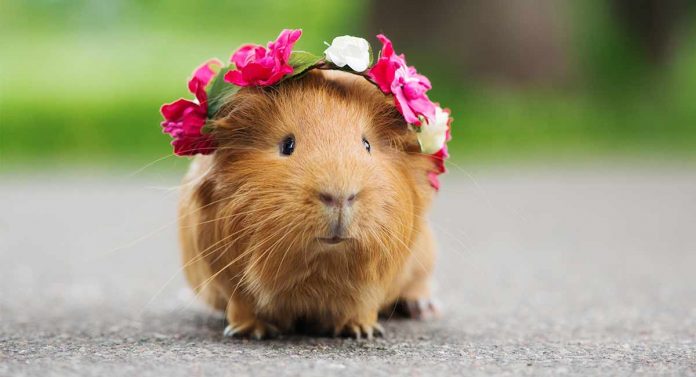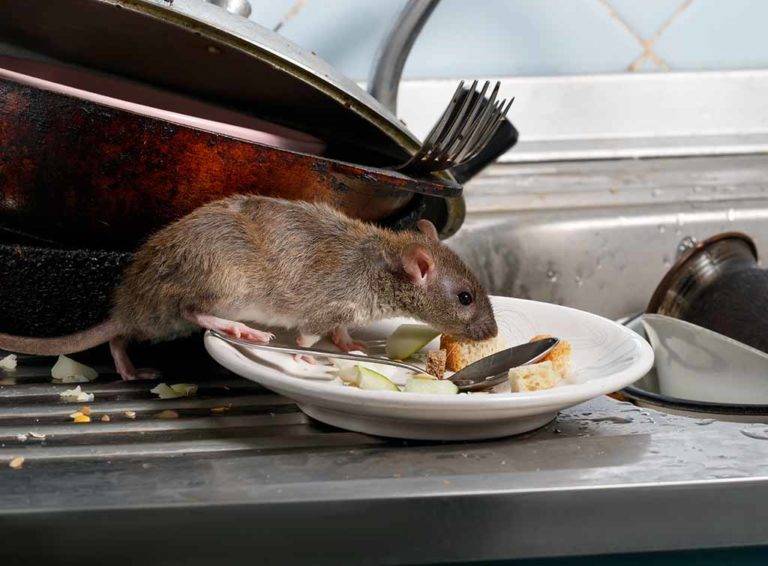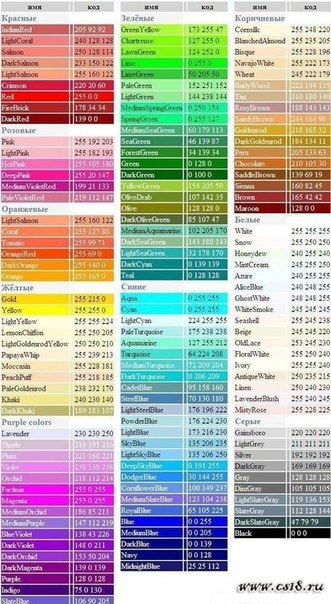Aging, the progressive decline in functional morphology that over time leads to increased mortality risk is markedly abrogated in the naked mole rat. Naked mole rats are the longest-lived rodents known, living approximately 30 years in captivity; 5.3 times longer than predicted on the basis of body size and nine times longer than similar-sized laboratory mice. Not only do naked mole rats have an extraordinarily long lifespan but they show sustained good health for at least 85% of their maximum longevity and show no age-associated acceleration in mortality risk. From the age of 2 to 20 years naked mole rats maintain lean muscle mass (O'Connor et al., 2002), bone health (Pinto et al., 2009), mitochondrial mass, and enzyme activities (Ungvari et al., 2008). Naked mole rats are eusocial, strictly subterranean mammals in the wild.
The only other mammal that meets these criteria of eusociality is the naked mole rat's close cousin the Damaraland mole rat . A typical naked mole rat colony has only one breeding female and a few (1–4) breeding males. The remainder of the colony is loosely categorized by body size. The larger animals tend to be the first captured in field studies and are thought to be the defenders of the colony.
The smaller animals function as food gatherers and burrow diggers. Subsequent collections and descriptions were reported in the 1890s through 1957 and are summarized by Brett . Most of those studies focused upon the unusual anatomy of this species and morphological adaptations to life underground. Jennifer Jarvis began studying these animals in the late 1960s and was the first person to bring these hairless rodents into the laboratory. She observed that these animals were highly social and appeared to work together to excavate tunnels and find food.
She also noted that she seldom found pregnant animals in the wild and even in captivity had little success with the formation and maintenance of breeding colonies. Subsequently, a group of biologists primarily working with Jarvis began studying and reporting on their unique biology. In the mid 1970s, Alexander, an evolutionary biologist whose research focused on the evolution of eusociality , described the ideal hypothetical eusocial mammal.
At that time no eusocial mammals had yet been identified and only the wasps, ants, and bees were known to be eusocial. He described his hypothetical eusocial mammal as strictly subterranean, living in hard soils and cooperatively foraging on large underground tubers. A colleague and friend of Jarvis, TL Vaughan, told Alexander that he had aptly described the naked mole rat, rodents that Vaughan had seen in the office of Jarvis. Alexander, his doctoral student Sherman, and Jarvis thereafter began an extensive collaborative study on eusociality and behavior in the naked mole rat. Naked mole rats are famously wrinkled rodents, native to East African deserts. They live in colonies underground, headed by a queen who does all the breeding, by mating with just a few males at any given time.
They can live without oxygen for up to 18 minutes without ill effect, by switching over to metabolizing fructose instead of the more usual glucose. Their sperm is of "dismal" quality, according to one researcher, yet they are still perfectly fertile. And they live bizarrely long, over 30 years in captivity and up to 17 years in the wild.
Based on their size, naked mole rats should live about 6 years in cushy conditions, just like lab mice. Now, it seems their lack of normal aging might help explain their longevity. Naked mole rats are mouse-sized rodents that have become an important animal model in biomedical research. They play a unique mammalian role in behavioral and ecophysiological research of life underground. This chapter studies the general physiology, anatomy of organ systems, husbandry, and uses in research of the naked mole rats. Naked mole rats belong to the order Rodentia in that they have two incisor teeth on the upper and lower arcade that continuously grow.
They are typically housed at 28–30°C, and at 50–60% relative humidity. Because naked mole rats are social and have cooperative behaviors, the study of their conduct has more applicability to people. The chapter describes the models of experimental research on the naked mole rat such as the model of reproductive suppression, model of somatosensory processing, model of bone elongation, and model of aging. The kidneys of the naked mole rat are unipapillate and unlike other arid-dwelling organisms are capable of only a moderate concentrating of urine . Given the high humidity in their burrows in the wild, this may be adequate for both pulmonary and cutaneous evaporative water loss. However, if high humidity is not maintained under captive conditions, evaporative water loss reaches the highest levels recorded for homeotherms .
Few animal models used in aging studies show slow rates of aging with affiliated prolonged good health-span and lifespan. Rather, traditional aging models are chosen primarily because such animals have poor defenses against aging and are short-lived. For example the most common mammal used in aging is the C57Bl/6 mouse that only lives 50% as long as predicted by body size. Use of short-lived species enables rapid evaluation of whether experimental manipulation of environmental (e.g., caloric restriction ) and/or genetic factors alter lifespan . Long-lived species may possess certain traits germane to retarding aging that enable them to attain their impressive longevity . Naked mole rats have low metabolic rates, approximately 70% of that of similar-sized rodents .
Indeed both their metabolic and body temperature profiles at temperatures below 28°C, closely track that expected for a similar-sized lizard. The relative increase in metabolic rate from 29–32°C is similar to that observed in mice housed within their thermoneutral zone and in a refrigerator at 4°C. Hence, given their lack of insulatory pelage, naked mole rats have a much narrower window in which they can thermoregulate relative to other mammals.
Indeed it is only at subzero temperatures that mice show the similar hypothermic "reptilian" response of a decline in metabolism and body temperature as conditions become colder. At temperatures above 29°C, naked mole rats employ non-shivering thermogenesis initiated by catecholaminergic innervation of interscapular brown fat (Daly et al., 1997). Brown fat is also found in the neck, inguinal, axillary, and perirenal areas. This can generate heat and may maintain a constant body temperature if the animals are housed in large groups in a humid environment that prevents evaporative cooling. Naked mole rats naturally have low thyroid hormone levels, in keeping with the warm temperatures they encounter in burrows or under institutional housing conditions.
However, they show increased thyroid activity if housed in the cold for prolonged periods, thus conforming to general mammalian cold acclimation trends (Buffenstein et al., 2001). Reproductive suppression of non-breeding female naked mole rats is profound in that the majority of females remain in a pre-pubertal state for their entire lives. This suggests that the primary site of reproductive hormone inhibition is at the level of the brain (Holmes et al., 2009). Non-breeding males generally have lower levels of urinary testosterone compared to breeding males, but the difference is not as large as in the females. Rodentia in that they have two incisor teeth on the upper and lower arcade that continuously grow.
Keeping rats as pets can come with the stigma that rats supposedly transmit dangerous diseases to their owners. Usually, rats bred as pets are tested and treated for diseases and parasites. Norvegicus is not among the list of species considered a threat. In 2004, an outbreak of salmonella in the United States was connected to people who owned pet rats. It will eat anything, including soap, leather, furs, candy, milk, meat, vegetables, poultry, eggs, grain, seeds, fruit, nuts, snails and other rodents.
Near homes, rats thrive on pet food, birdseed, grass seed, garbage, dog feces, and the uneaten or spoiled food we discard. While rats will eat nearly anything, they prefer grain, livestock feed, and meat. Unlike the mouse, which nibbles a little at a time, rats will fill up at one sitting, if possible.
Rats will hoard and cache food, which can result in insect infestations. Like mice, rats will live in freezers, feeding only on frozen food. Rats eat so much that one rat can leave behind 25,000 droppings per year. The rat's main constraint is that it cannot go long without water unless its diet supplies enough.
To care for a hairless rat, prepare a cage with at least 2 square feet of floor space, and line it with paper bedding or newspaper. Make sure to clean the bedding 3 times a week, since hairless rats are prone to respiratory infections caused by dirty cages. Additionally, provide your rat with a lab block to eat, which will give it all the vitamins and minerals it needs to be healthy. You can also offer it fruits and vegetables, like strawberries or carrots, once a day to give it something fresh to eat. As mentioned earlier, naked mole rats have a very unusual combination of ecological and social characteristics. They are fully subterranean, extremely social, and they live in colonies with many individuals.
In other words, naked mole rats live in large numbers in very tight quarters and in very poorly ventilated spaces where metabolic activity increases carbon dioxide and ammonia to extremely high levels. In other mammals, exposure to chronically high levels of CO2 and ammonia induces pain, especially in the eyes and nose. It appears that the insensitivity to chemical irritants in naked mole rats is an adaptation to living in an otherwise painful environment. Few pathogens have been reported in naked mole rats, which is noteworthy considering the preponderance of naked mole rat colonies in zoos and conventional institutional rodent facilities. Zoos are environments that have less control over the spread of pathogens.
Naked mole rats seem to be extremely resilient to pathogens and other toxic insults. As such, incidences of pathogenic outbreaks may not be reported. Surveys of zoo pathologists however support the premise that naked mole rats are extremely resilient and resistant to infectious agents.
A unique identifying feature of naked mole rats is the large incisor teeth that are external to the mouth. Having the teeth external enables the animals to dig without the earth coming inside the mouth. The incisor teeth appear to be greatly involved in somatosensory perception (Henry et al., 2006). The parotid, submandibular, and sublingual salivary glands are all well developed (Hill et al., 1955). The esophagus of the naked mole rat has keratinized stratified squamous epithelium and smooth muscle surrounding it.
The length of the small intestine is relatively short, and leads into a very large cecum (Rechkemmer et al., 1988). The intestinal mucosa does not have distinct subdivisions based on duodenal, jejunal, or ileal villar length. Despite the fact that members of the Bathyergidae are strictly herbivorous and eat a diet high in fiber, they nevertheless exhibit the highest digestive efficiency of all mammals . This is primarily due to comparatively long retention times in the gut and highly efficient microbial fermentation processes in the cecum coupled with coprophagy. Hairless rats are a coat variety characterized by varying levels of hair loss. These range from having areas of very short fur to being completely bald.
Since rex is a dominant trait, there only needs to be one rex parent to produce curly rex-coated offspring. However, when two rex parents are bred, two copies of the trait may be present in the offspring. This causes varying levels of hairlessness, and has earned the colloquial name "double rex". The other type of hairless rat is sometimes referred to as a "true hairless". This is caused by a different gene, and is distinguishable from a hairless double rex by the absence of whiskers. Unlike a double rex, this type of hairless rat is incapable of growing hairs on any part of the body.
One additional subset of semi-hairless rats, patchwork rex, constantly lose their hair and regrow it in different "patches" several times throughout their life. Unlike queen bees and termites that use pheromones to control colony behaviour, a naked mole-rat queen uses aggression, being the physically dominant animal in a colony. In established colonies mating occurs between the larger, dominant female queen and only a few chosen males. Using behavioral and chemical control , the queen prevents other adult females from reproducing. This tight control over sexual activity is essential if unity within the colony is to be maintained. A queen can produce a new litter every 80 days, and can have up to five litters per year.
The queen nurses the pups for about four weeks, although they may begin eating solid food at as early as two weeks of age. Pups also eat feces that are provided for them on demand by the workers. This not only provides nutrition, it also inoculates their digestive system with beneficial gut fauna. Pups begin performing work behaviors (digging, sweeping, carrying, etc.) at the age of three to four weeks.
Maturation rate is variable, but in general juveniles are physiologically capable of reproduction by the age of one year. Depending on the survival rate of the litter, the queen may have several litters each year. Due to many generations of inbreeding, all members of the colony are genetically similar. A breeding female breeds continuously throughout the year and may have as many as four litters per year. The average litter size is 12, but may be as small as one pup and as large as 29. In captivity, the gestation period ranges from 64–74 days and there is a 6–11-day post partum estrus, such that the inter-birth interval is approximately 80 days.
The female becomes obviously pregnant at about 40 days gestation, when her weight begins to increase significantly. By the end of pregnancy a female may more than double her non-pregnant body mass. Both pregnancy and lactation are energetically costly processes, increasing metabolic rate1.5–3-fold . The queen nurses the pups for 6 weeks, although they start eating solids and begging for and eating feces from older siblings at 14 days.
Fecal consumption provides the appropriate microfaunal innoculum necessary to digest fiber. Captive colonies of naked mole rats normally contain one breeder female, and she can retain this position for many years . The breeding females may produce more than 1100 offspring during their breeding reign and litter size tends to increase sometime after the breeders become established. On rare occasions there may be an additional female breeding within the colony. The level of dominant female aggression appears to influence whether this occurs and in most cases the offspring of the second breeder in the colony seldom survive.
It is sometimes difficult to introduce new rats to each other, so it is best to purchase them at the same time from the same cage at the pet store. Rats are extremely intelligent and enjoy being handled and exploring. Male rats do not often get along well together unless they are siblings and purchased at the same time; also make sure to select a cage large enough to give them separate living spaces. Do not keep males and females together as they reproduce readily. Rats are easily tamed, even if they are difficult at first.
The more you handle and work with your pet, the tamer it will become. Any animal may bite in defense if it feels threatened, but domestic rats generally are not known to bite. Remember to work with your pet after dusk, as it will be more willing to cooperate since it is a nocturnal animal. Place your pet's cage in a place in the home where it will be around the family, yet protected from direct light, drafts and excess noise during the day. Also be sure it is high enough to be out of reach of dog noses and small children's hands. Rats are prey animals and can feel threatened by large bodies above them or in their faces.
They are naturally suppressed from entering puberty and do not show differences in other hypothalamic pituitary hormones or serum IGF-1 levels, a clear advantage to other models. A couple of considerations when treating naked mole rats are that they take a long time to recover from anesthesia, and the reintroduction of animals back into the colony can cause a xenophobic response. Gaseous anesthesia is preferred and dosages of analgesics are much lower than dog dosages. In addition, the greater amount of time the naked mole rat is removed from the colony, the greater the chance of queen aggression on the animal. One tactic is to roll the animal in the toilet area before placing it back in the colony. Animals that are mobbed by colony members after reintroduction should be removed again.
Some shoving by the queen is acceptable and usually does not last long. The anatomy and physiology of the respiratory system in subterranean animals is of great interest because their environment can have high levels of carbon dioxide (7–8%) and low levels of oxygen (6%) . Naked mole rats have three turbinates , three lung lobes on the right and left sides, and a caudate lobe on the right side (Hill et al., 1955).























